Direct-to-consumer brand YT industries has enjoyed impressive success thanks to competitively-priced, top-performing kit backed up by aggressive and novel marketing campaigns and a whole host of top-level sponsored athletes.
- The new YT Jeffsy Base costs less but gives you a whole lot more
- Canyon Spectral:ON 9.0 first ride review
Its lowest priced bikes are especially appetising because they share most of the geometry and frame technology — such as metric shocks and internal cable routing — as their more expensive counterparts, but are made from aluminium rather than carbon.
Looking to spend a little more?
YT Jeffsy Pro 29 | ⭐️⭐️⭐️⭐️ | £3,399
The more expensive version was worth the cash, striking a good balance between enduro capability and trail bike finesse.
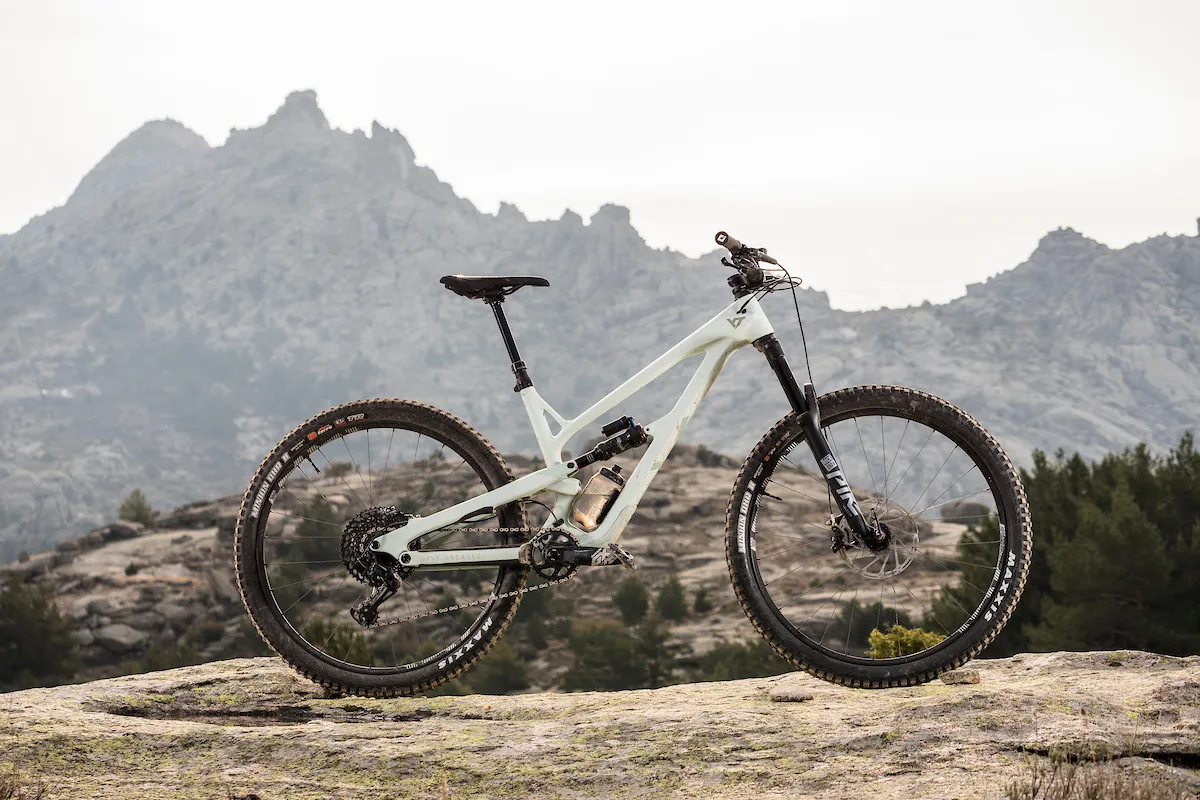
The Jeffsy, YT’s gravity-hungry trail bike, is no exception to this rule and on the face of it offers exceptional value and performance that very few other brands can match.
I took the Base 29 out on the trails to find out whether you need to consider spending the extra cash on a more expensive model or if the cheapest version offers everything you need, which was updated in 2020 to match its carbon sibling’s geometry and suspension.
YT Jeffsy Base 29 frame and suspension details
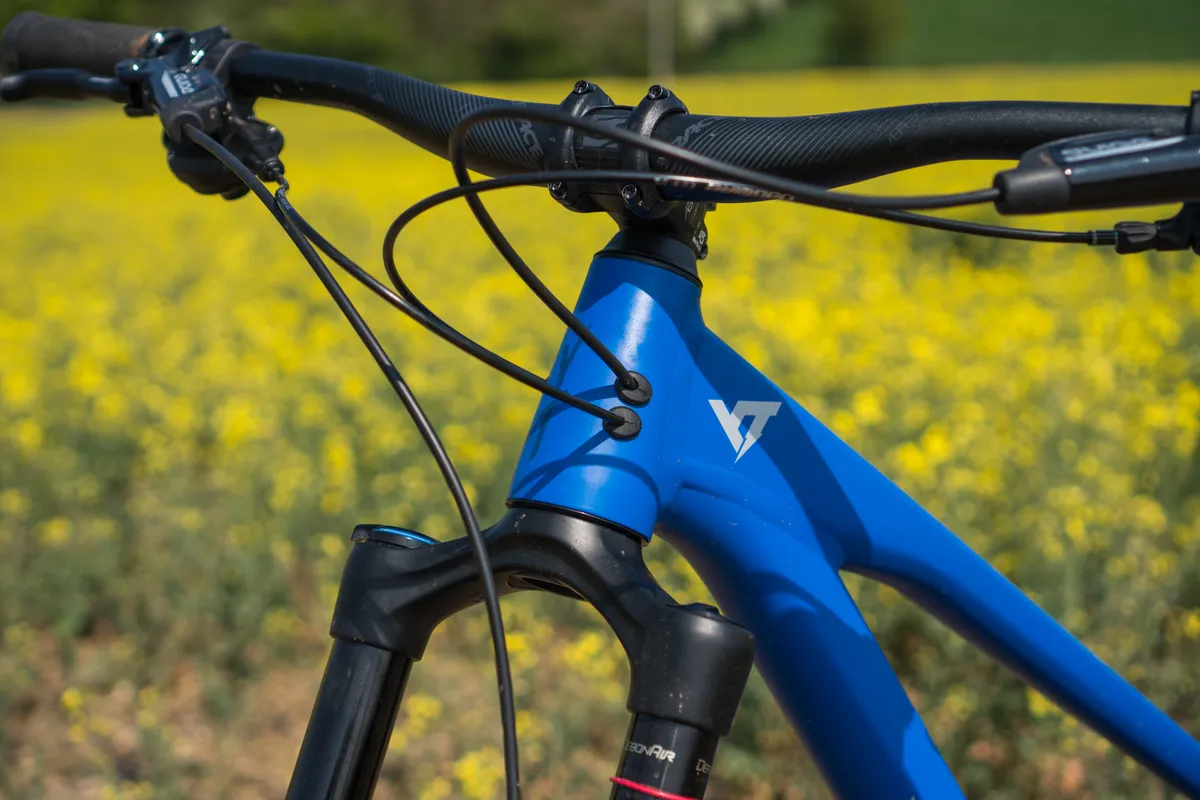
Built with aluminium tubing, it features internally-routed brake, gear and dropper cables. There’s an integrated down tube protector and Jeffsy-specific water bottle mounts on the top side of the down tube between the seat tube and shock mount.
The frame’s got single-sided access to the pivot hardware, which means tightening bolts and servicing the bike is easier. YT also claims that it's beefed up pivot sealing to help increase maintenance intervals.
The rear axle is based around the Boost 148x12 standard and there is also seat and chainstay protection as standard.
The Jeffsy Base 29 is built around 29in wheels, but a 27.5in model is also available with the same spec.
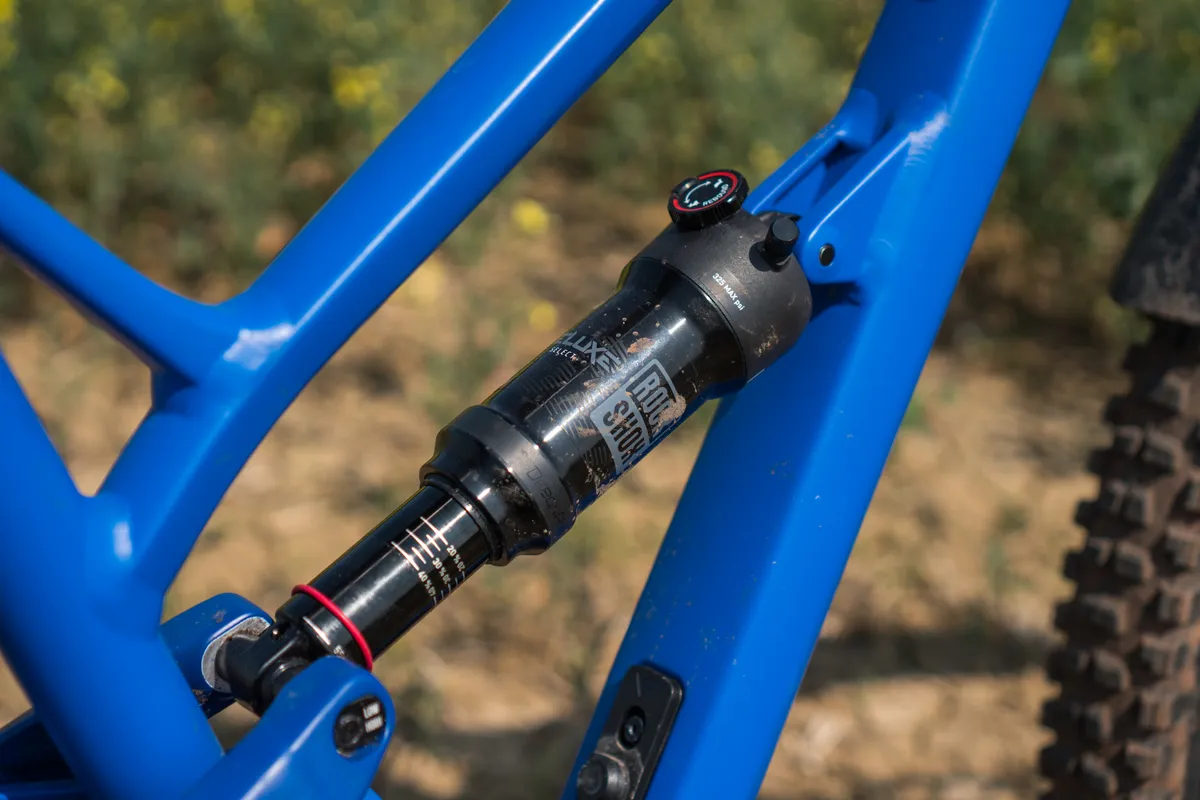
The Jeffsy has 150mm of rear wheel travel with progressive kinematics dubbed ‘V4L’.
The suspension platform is a Horst-link system where the rear wheel is attached to the seatstays just behind the seatstay/chainstay pivot and is similar in design to Specialized’s FSR system.
YT Jeffsy Base 29 geometry
As a real boon, YT has specced the latest aluminium Jeffsy with a 77.5-degree seat tube angle – much steeper than most other brands’ offerings at the moment.
The large size bike I tested has a spacious 470mm reach, a short 435mm chainstay and a relatively long 1,226mm wheelbase.
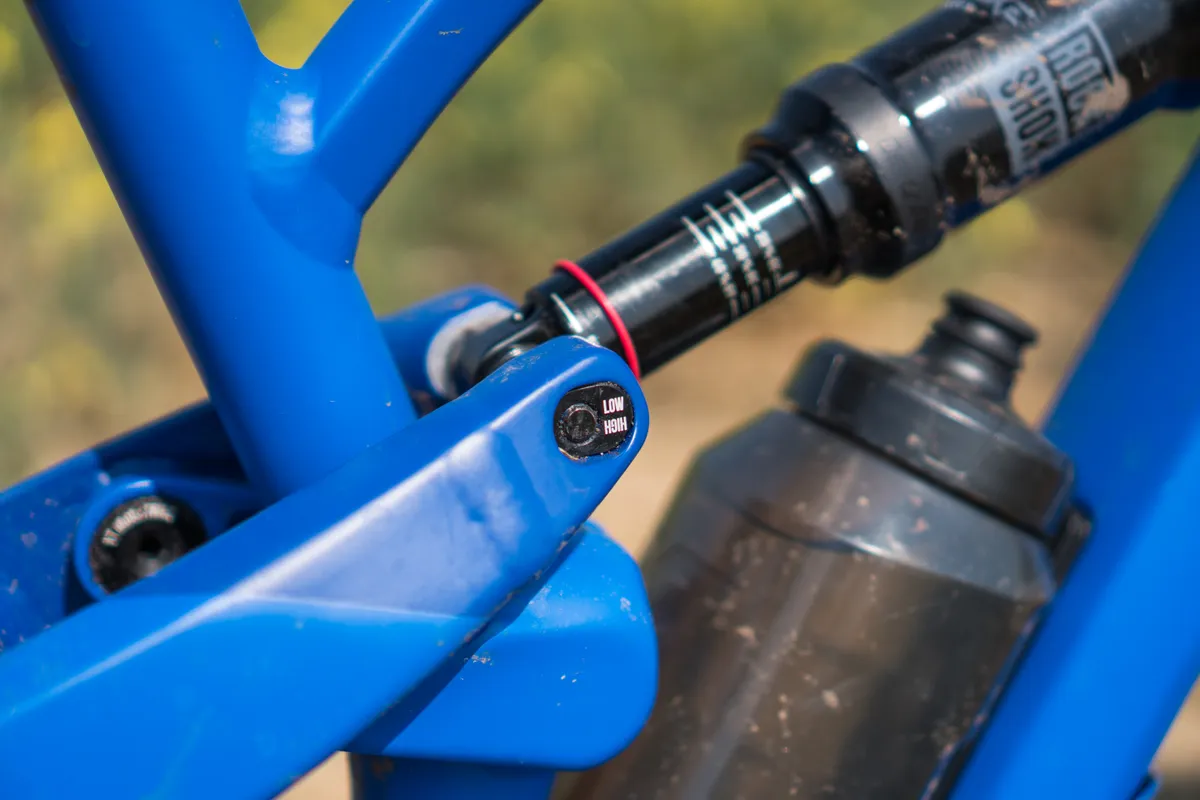
The head angle comes out at 66 degrees when the geometry flip-chip – which changes the bottom bracket height, seat tube angle and head angle – is in its lowest setting.
The bike’s available in five sizes from S to XXL, and the XL and XXL bikes get longer 440mm chainstays.
- Sizes (*size tested and quoted geometry figures): S, M, L*, XL, XXL
- Seat tube length: 627mm
- Seat angle: 77/77.5 degrees (low/high)
- Head angle: 66/66.5 degrees (low/high)
- Top tube (effective): 615mm
- Reach: 470mm
- Chainstay: 435mm
- Wheelbase: 1,226mm
- Stack: 627mm
- Head tube length: 110mm
YT Jeffsy Base 29 specifications
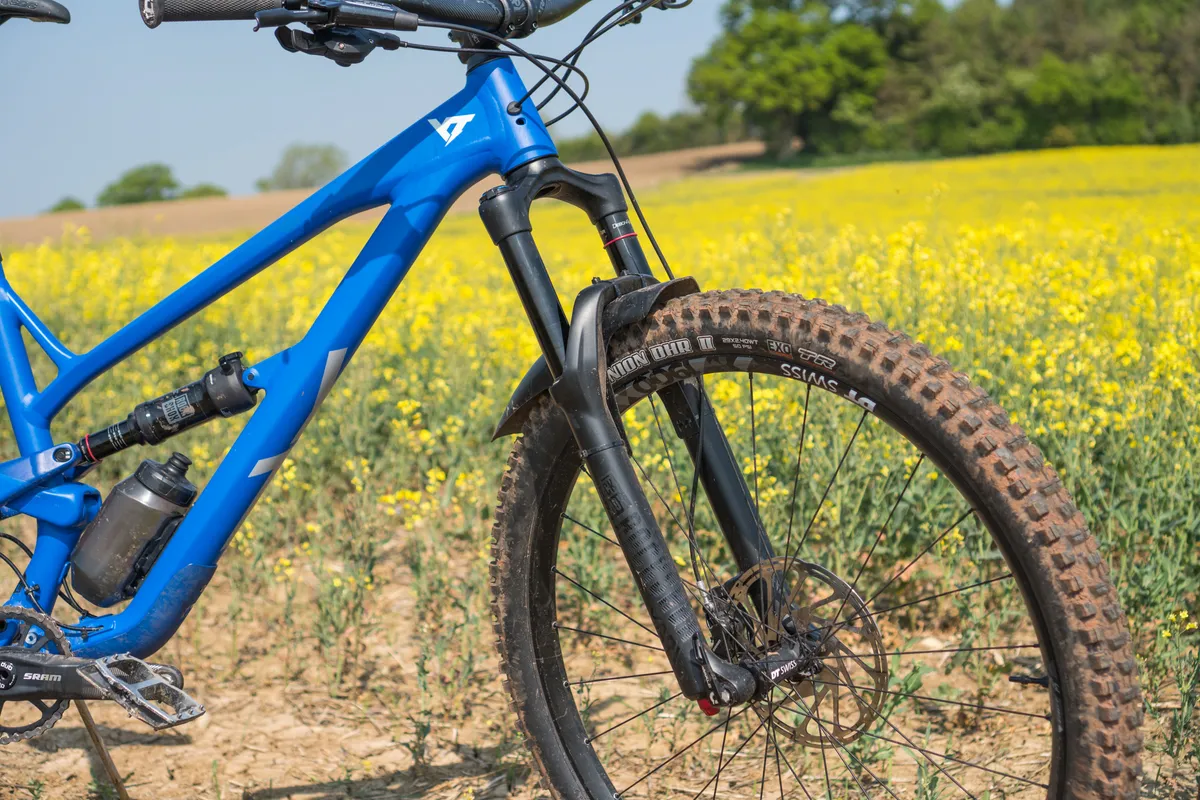
YT bikes always have fantastic specs for the money and the Jeffsy Base is no exception with an almost full-house of branded kit.
Up front, there’s a RockShox Yari RC fork with Motion Control damping and 150mm of travel paired with a RockShox Deluxe Select rear shock out back.
It’s got a 12-speed SRAM Eagle SX drivetrain and Race Face bar, stem with ODI Elite Motion grips. There are SRAM Guide T brakes with a 200mm front, 180mm back rotor mix and an SDG RD MNT saddle.
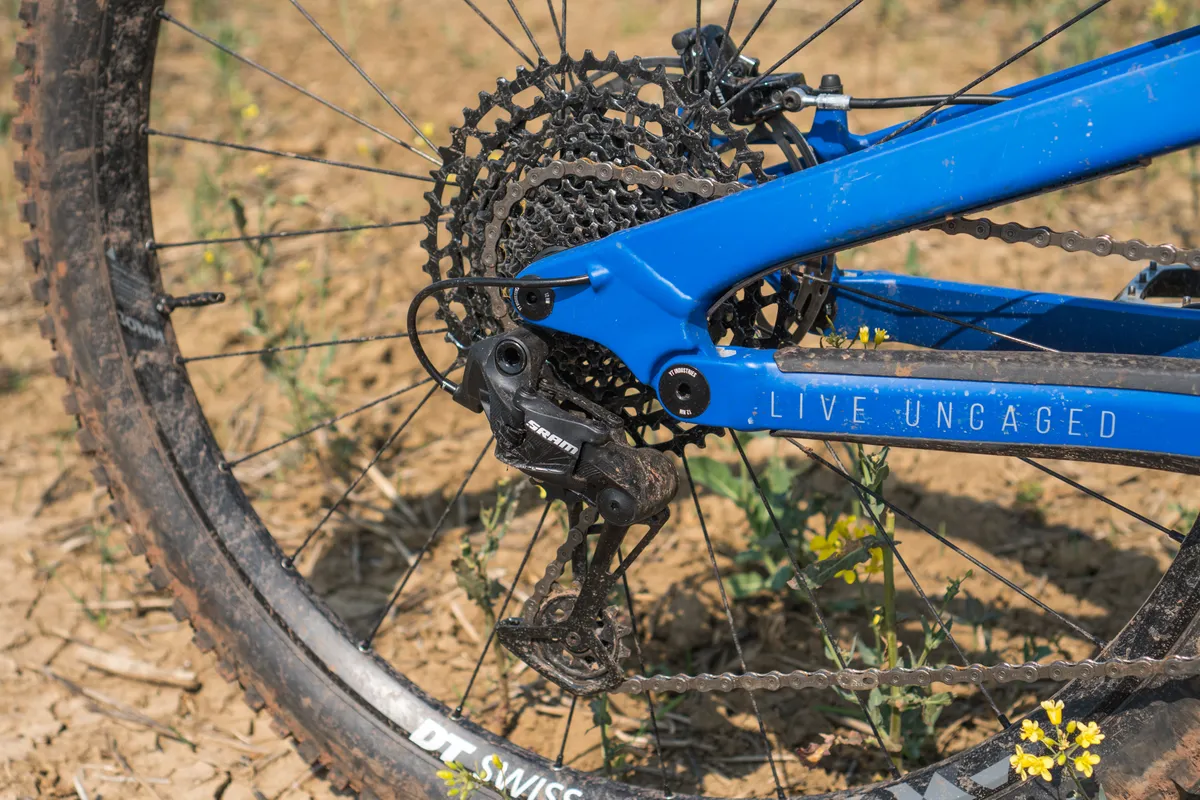
Maxxis Minion DHF and DHRII dual compound EXO TR tyres are wrapped around DT Swiss M1900 wheels and you get YT’s own-brand Postman dropper with 150mm of travel on the size large frame.
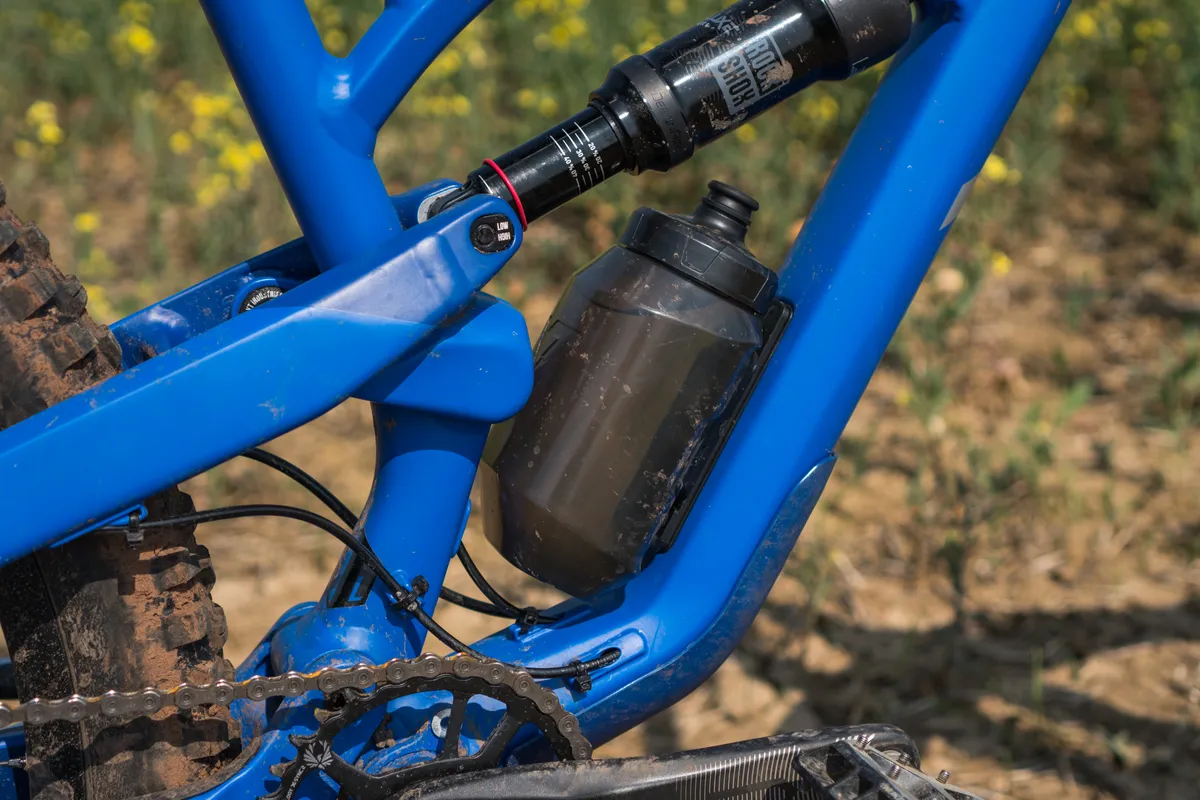
Not included in the bike’s spec is YT’s Thirstmaster 4000 600ml water bottle that relies on Fidlock’s Twist System to keep it in place. The bottle is a £41.90 / $49.90 / €49.90 extra.
YT Jeffsy Base 29 ride impressions
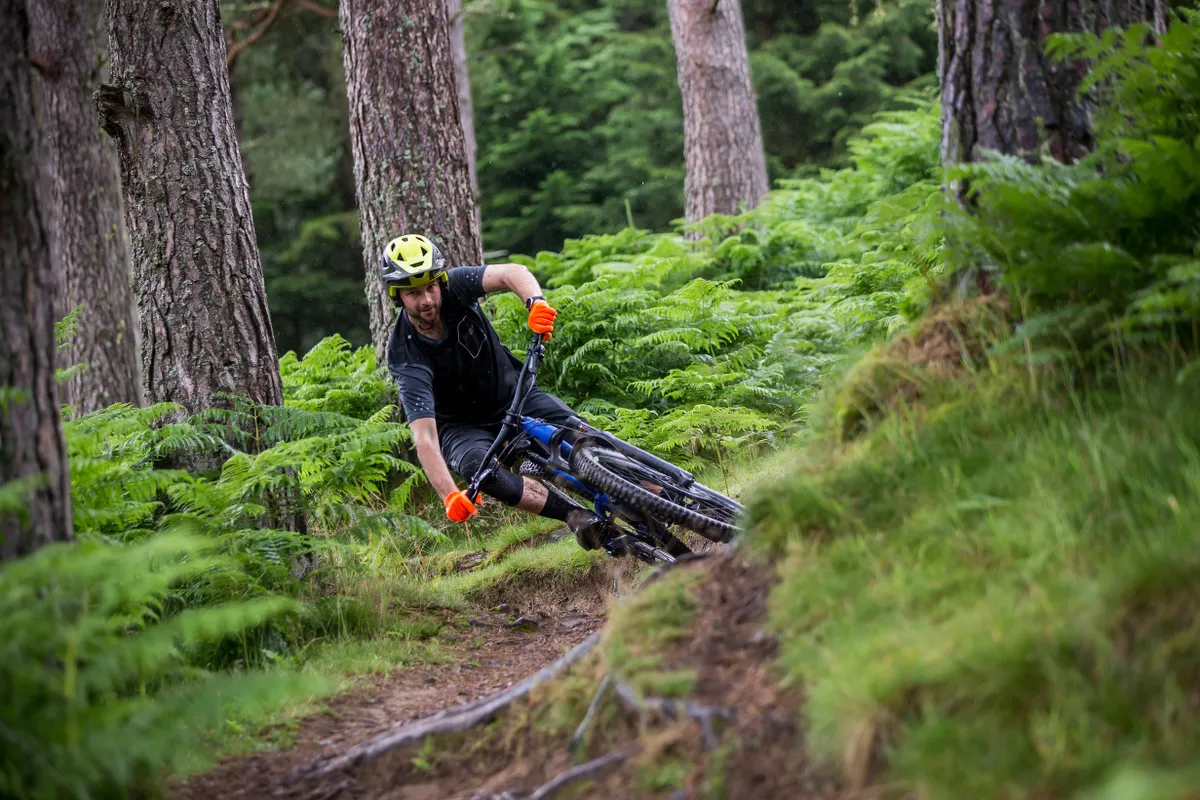
I managed to test the Jeffsy base just before the UK coronavirus lockdown on a whole range of trails from steeper, secret, enduro-style runs through to paved trail centre loops.
Set up was very easy. There are no compression damping adjustments on the forks or rear shock and spring rates are set with air pressure.
For my weight (73kg) and riding style (fairly aggressive), I set the forks to 110psi – my preferred setting for RockShox’s Debonair spring with three tokens – and the rear shock to 185psi.
Both the fork and shock were set with higher spring rates than recommended. I set the rebound to feel and preference.
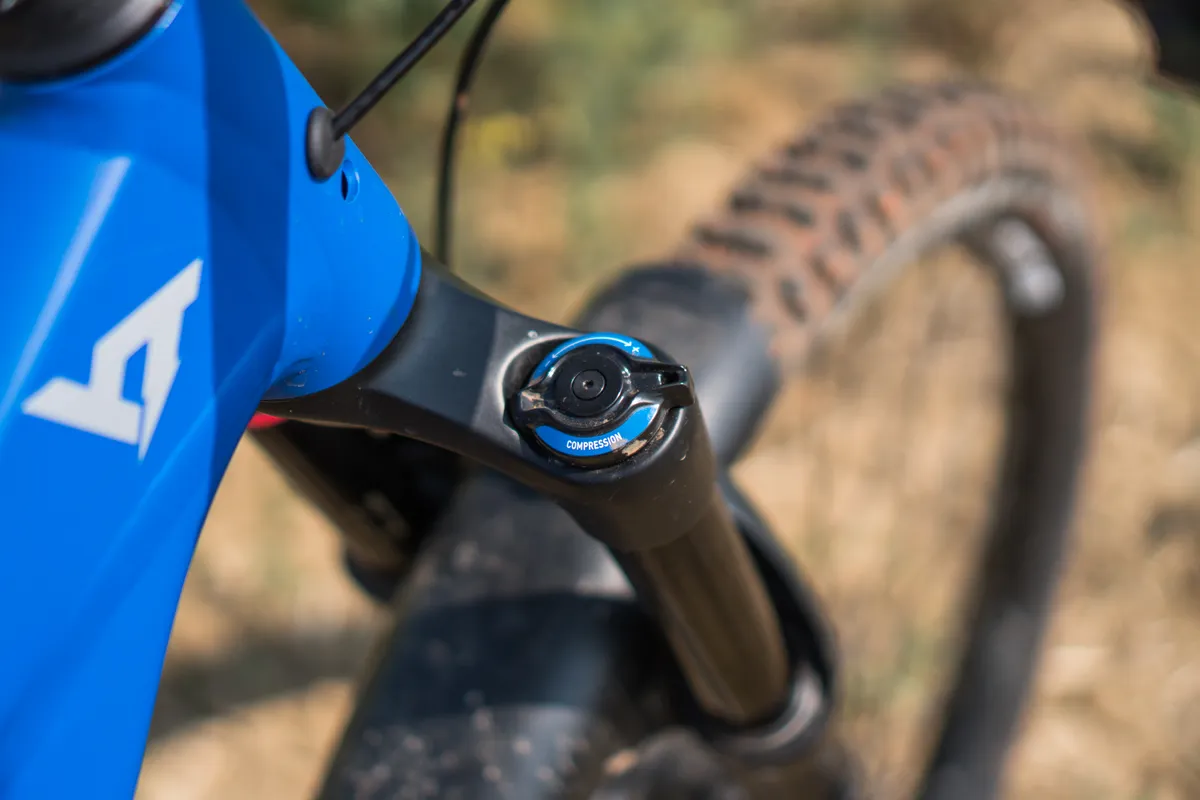
YT Jeffsy Base 29 bike climbing performance
The steep seat-tube angle is a real performance highlight on the climbs. Although the seat did still require adjusting nose down and forwards in the seatpost’s clamp, it wasn’t as extreme as bikes with a slacker angle.
This helped to keep my weight relatively central on the bike which improved control, comfort and grip on the climbs because I wasn’t stretching forwards over the bars or constantly battling against the bike to keep my weight from being over the back wheel.
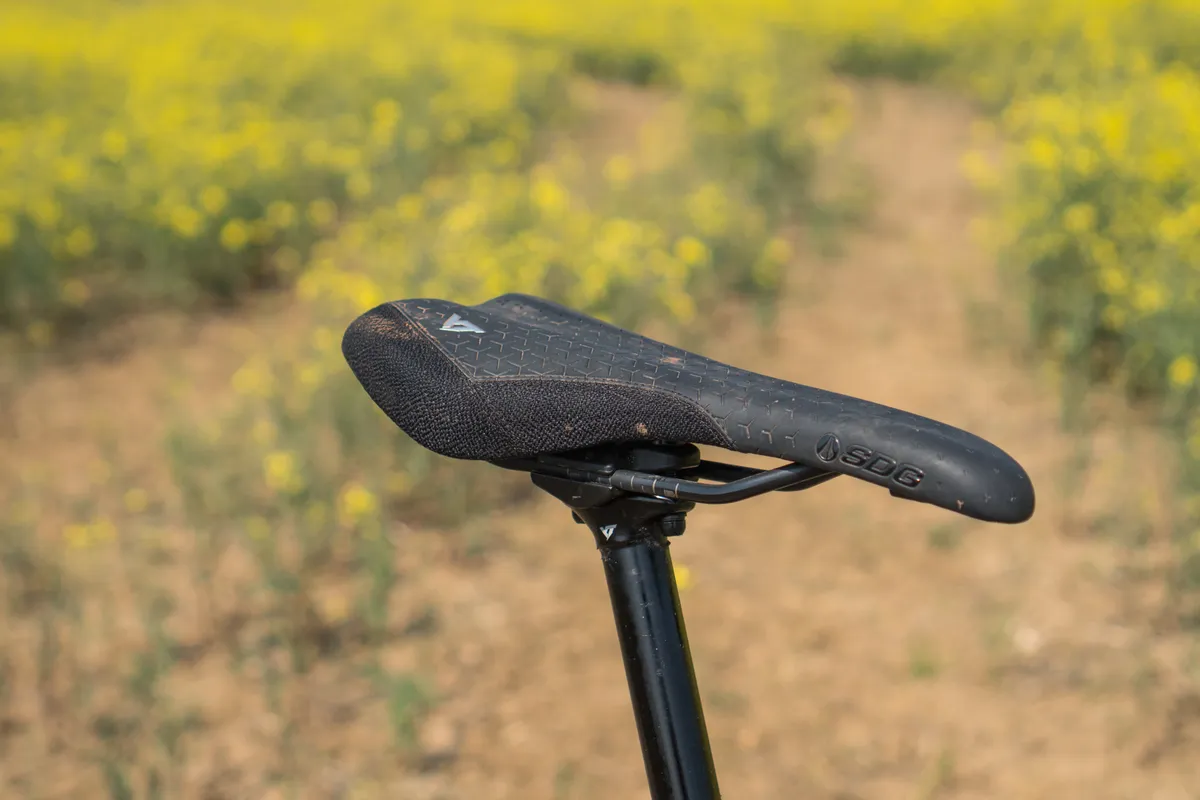
Climbing was a comfortable affair, but the bike didn’t have much urgency. In fact, it’s a chunky beast of a bike on the ascents and you feel every kilogram of its 15.49kg weight.
Luckily, it’s specced with SRAM’s 12-speed Eagle cassette and the lowest gear ratio is 50/32, so winching up the climbs isn’t disastrously hard.
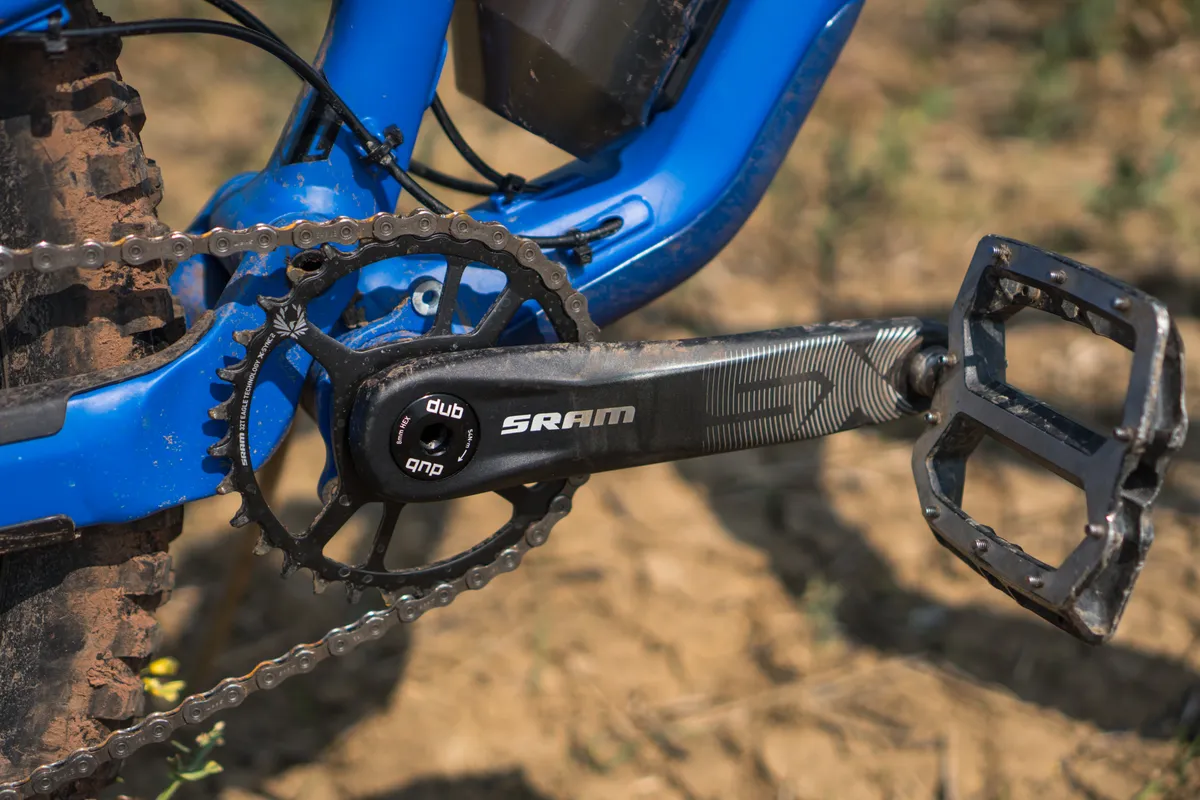
There’s not a huge amount of pedal bob on the climbs and I didn’t feel like it needed a lockout function whether I was pedalling standing up or seated.
The solid pedalling platform feels like it’s a combination of a well-damped rear shock and the in-built suspension kinematics, both joining forces to provide top levels of support. The shock pressures I like to run also help reduce pedal bob.
It is a good job the bike doesn’t need a climb lever with the way I had it setup, because the Base-spec Jeffsy doesn’t have one.
The suspension isn’t hugely active on the small bumps but does manage to do a good job of ironing out the harshest of hits. Don’t expect it to feel like you’re aboard a hovercraft, though.
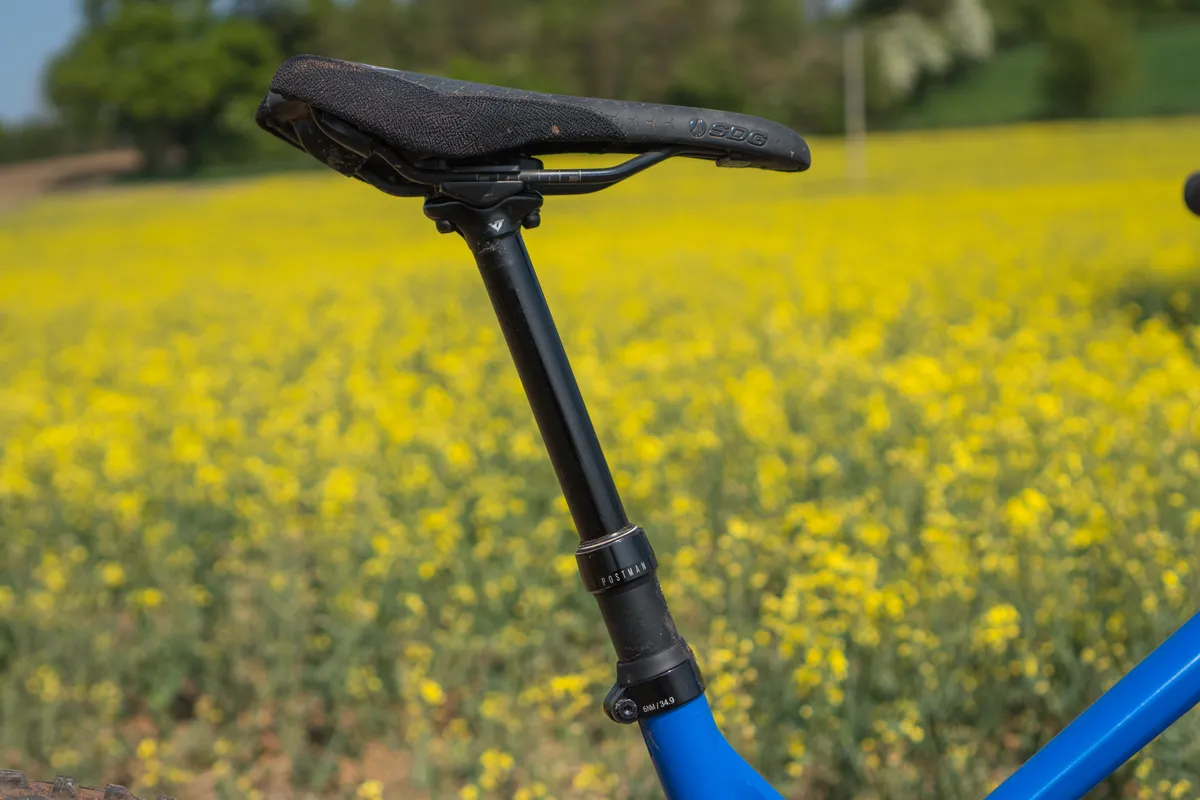
Even with the steep seat tube angle, it doesn’t feel like there’s less top-tube space when seated, and small movements didn’t have extreme adverse impacts on how the bike made uphill progress.
Generally speaking, the Jeffsy’s competent on the climbs, but if you’re looking to zoom to the top you’ll want to put the Jeffsy Base on a diet.
It feel like a gravity-focused bike rather than a trail shredder, although I’m convinced lighter models would be much better on the climbs.
YT Jeffsy Base 29 bike descending performance
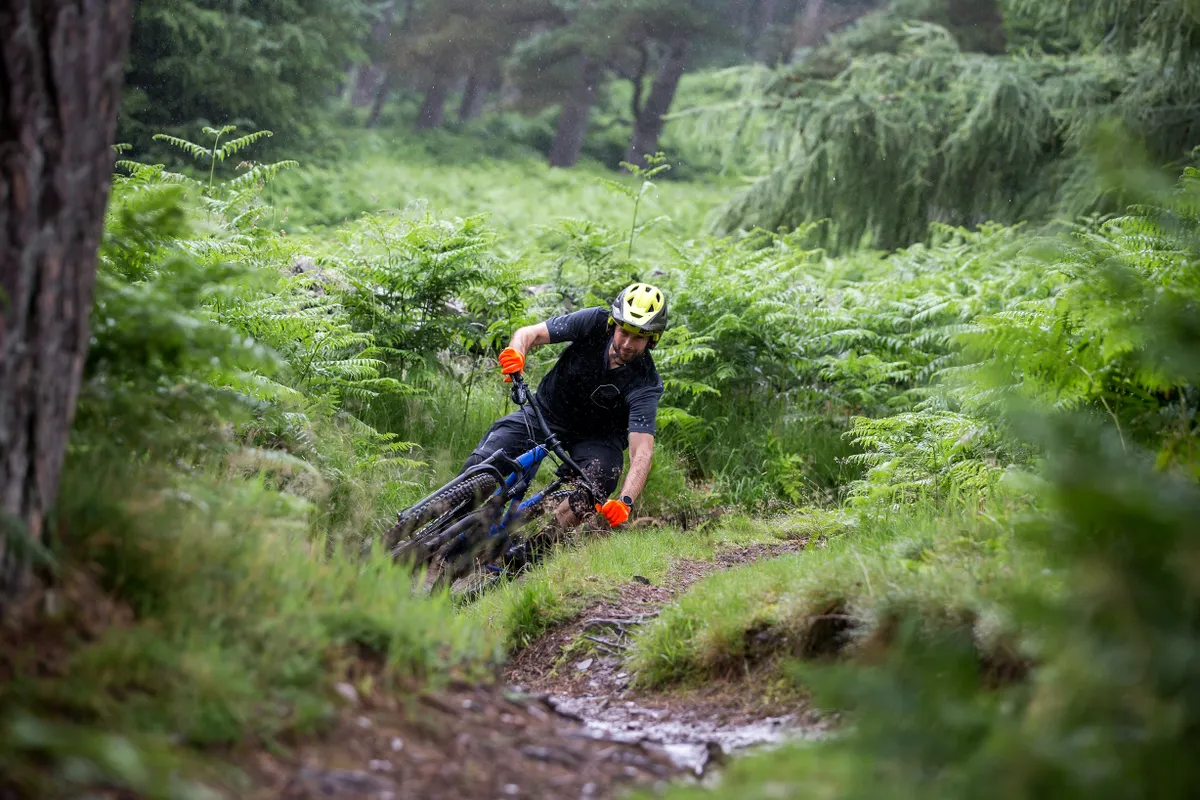
The Jeffsy’s heft is a plus on the descents. The chassis has a feeling of stability and smoothness even over particularly harsh terrain. This makes it easy to pick up speed on flatter sections, control it on steeper bits of track and choose lines precisely.
This in-built feeling of stability, like on the climbs, is in part due to the shock tune and suspension kinematic, and also the geometry.
The suspension has amazing levels of support throughout the travel, which let me corner confidently. The harder it was pushed through turns the more it came alive, not getting overwhelmed by bodyweight or terrain.
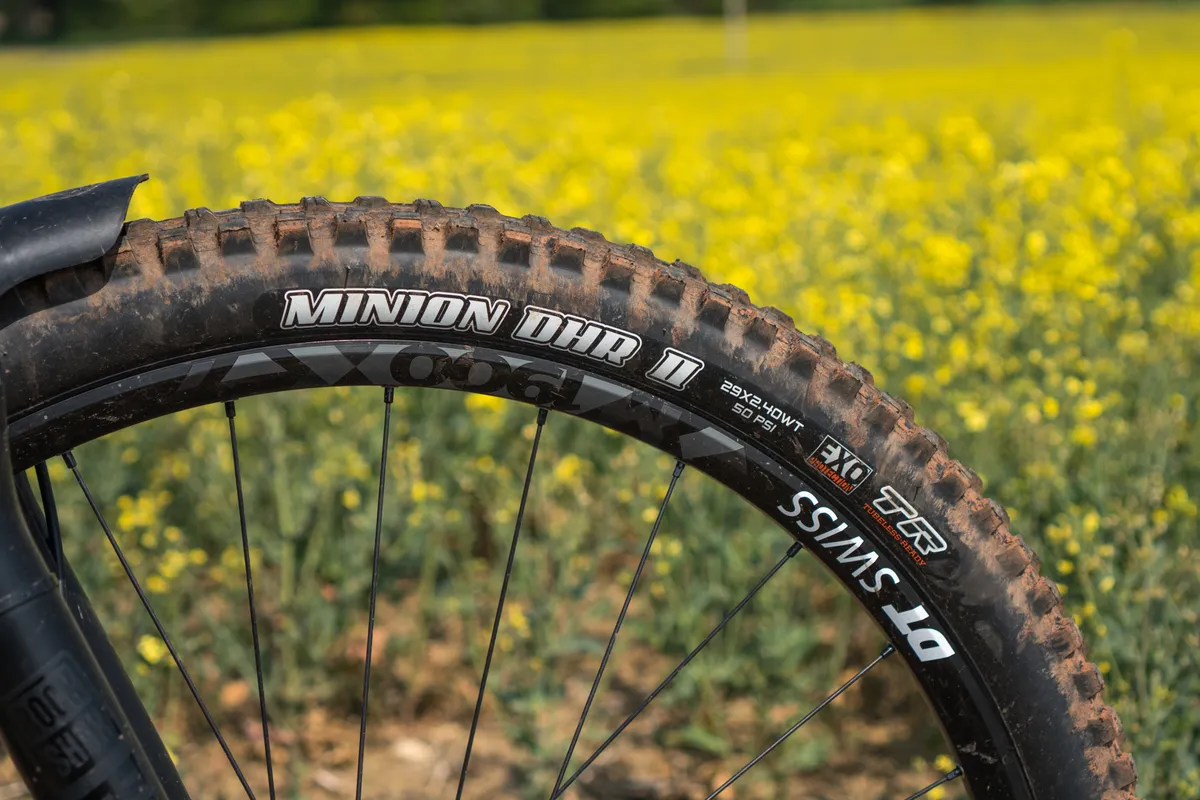
I could also generate speed from the terrain without feeling like the bike was wallowing around beneath me. Even at the very edge of the Jeffsy’s limits, for example through deep, successive holes, bottom-out was virtually imperceptible.
This makes it feel like a stocky, stout bruiser of a bike.
Also, the geometry, when all mated together, is impressively coherent. The front-to-back ratio on the size large – 791mm front centre, 435mm chainstay length and 470mm reach – means that it’s really easy to tackle terrain you wouldn’t normally consider on a 150mm rear-wheel travel bike.
There’s loads of space to move around on the bike and I didn’t find myself wanting to hang off the back wheel on steep sections or lean massively over the front to maintain grip on the turns.
The suspension and geometry combined make it a massively fun and capable bike to ride, with its only limitation being the amount of suspension travel it has, not the way in which it is delivered.
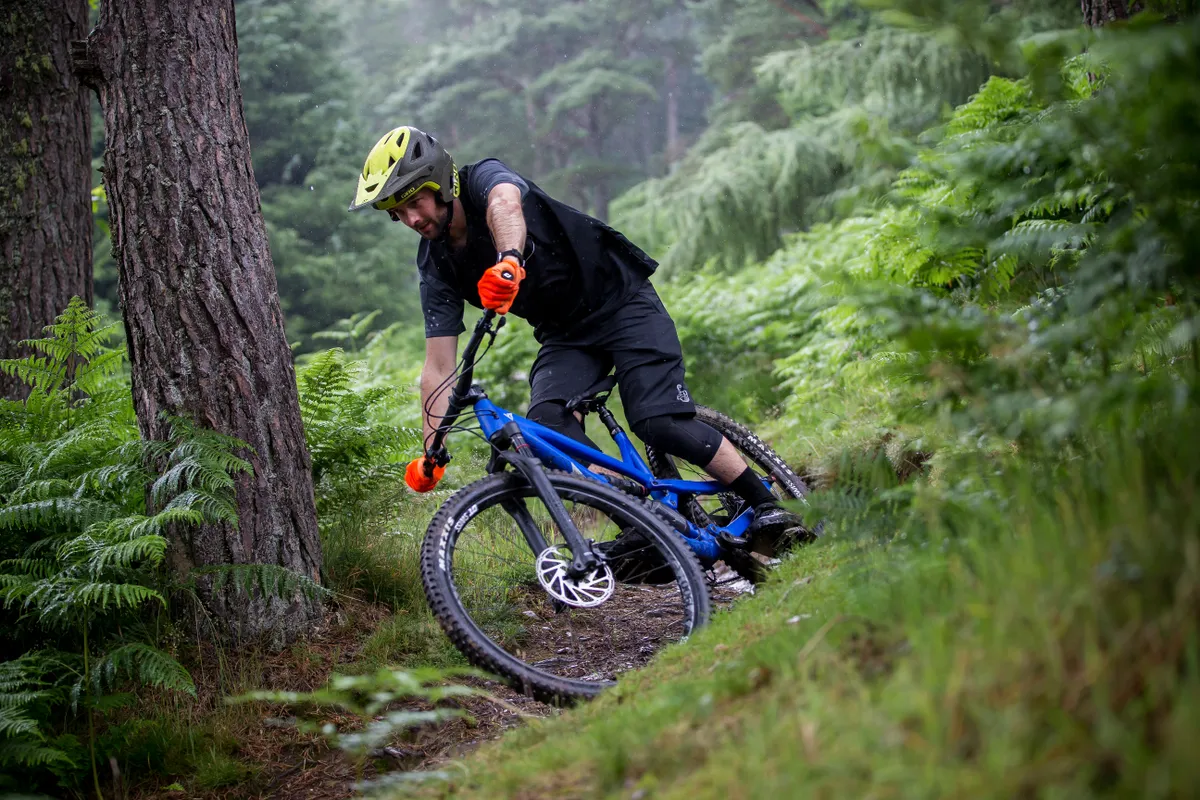
It therefore doesn’t quite hit enduro bike levels of capability, but this imaginary ceiling on performance could be down to the bike running bottom of the range dampers rather than anything else in particular.
When compared to a Charger 2-equipped fork, the Motion Control Yari isn’t as smooth and this is most noticeable on smaller chattery bumps. Bigger hits are less of a problem and the fork was impressive considering it’s the basic model.
The Guide T brakes felt good with the larger 200mm and 180mm rotors giving plenty of bite. On tougher descents they did begin to fade, however. Likewise, the bar and stem were a comfortable shape and didn’t feel harsh over bumps.
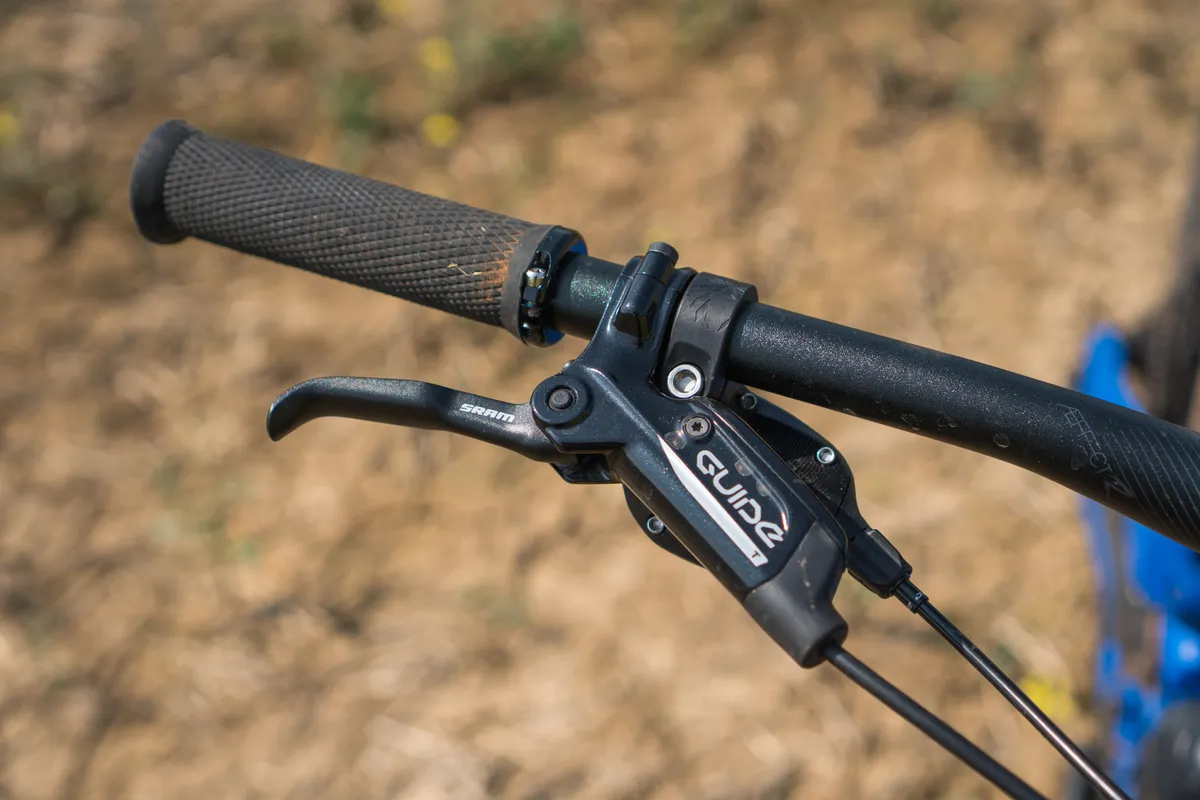
The lack of gear and brake lever matchmakers – the small adaptors that allow the shifter and dropper remote to be mounted to the brake lever bar clamps – meant I struggled to get the dropper remote and gear shifter in the correct position for my preferences.
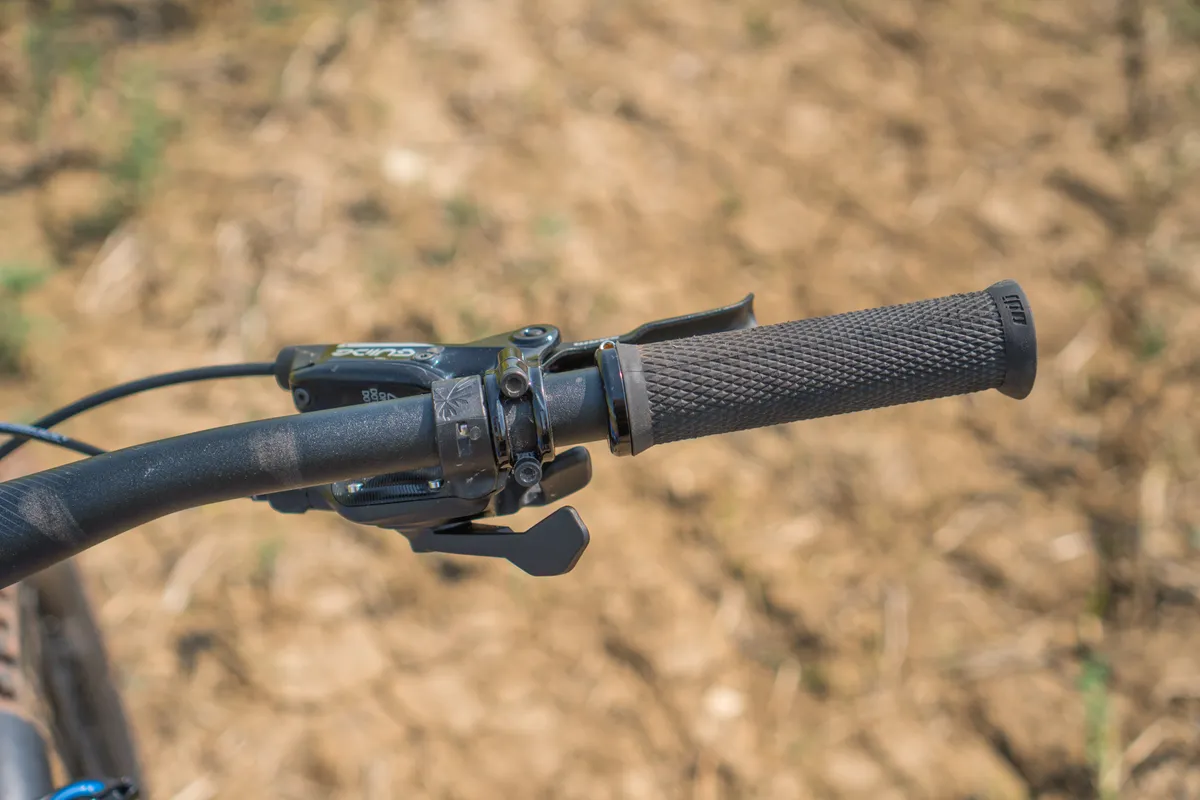
I struggled to reach the lever paddles when they were on the stem side of the brake lever. When they were the other side of the brake lever, closest to the grips, the shifter paddles contacted my thumb, causing some discomfort.
Unfortunately, the Matchmaker system isn’t available for SX Eagle shifters, and YT’s own Postman dropper doesn’t appear to be compatible either, and rectifying the simple problem of lever placement on the bars could be particularly expensive.
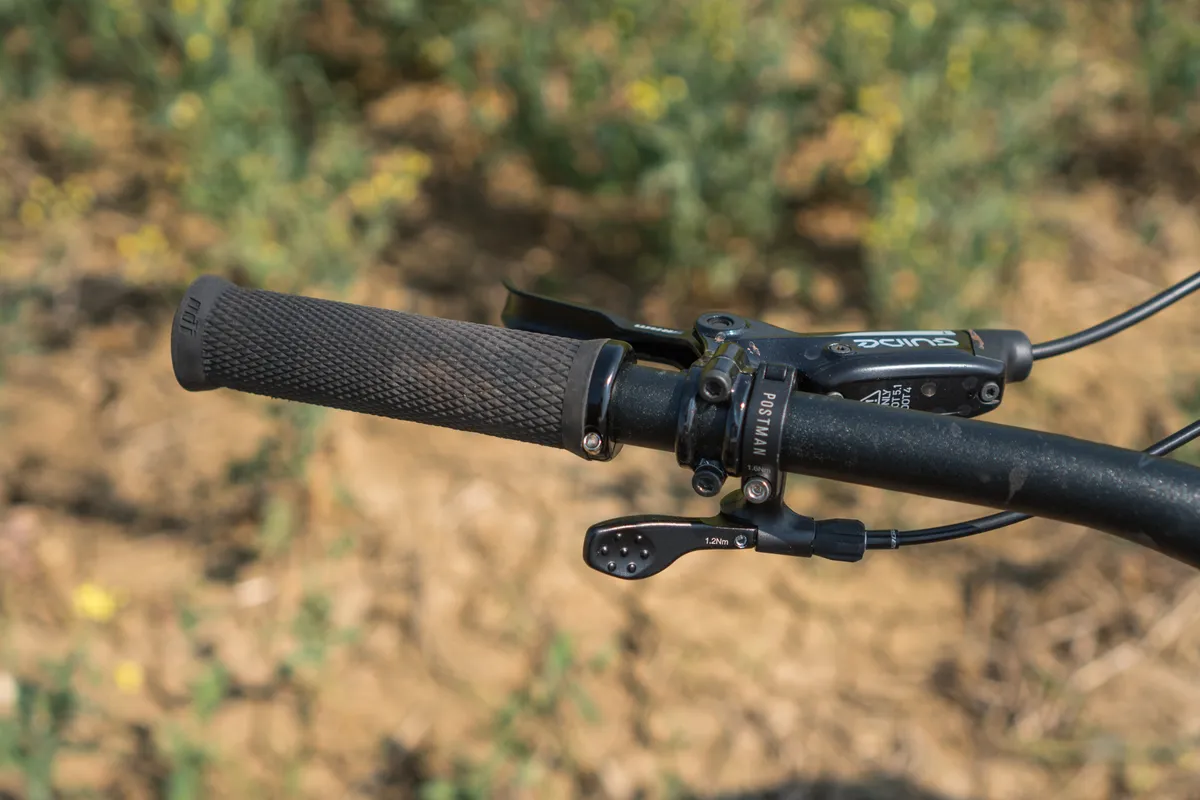
I like to hold to my grips slightly over the ends and I found the large flange on the outside edge of the grips intolerable because they put pressure on the outside of my hands. I appreciate this issue is a personal one, but YT could have chosen to spec a more neutral pair of grips on the bike. A grip upgrade is relatively inexpensive, however.
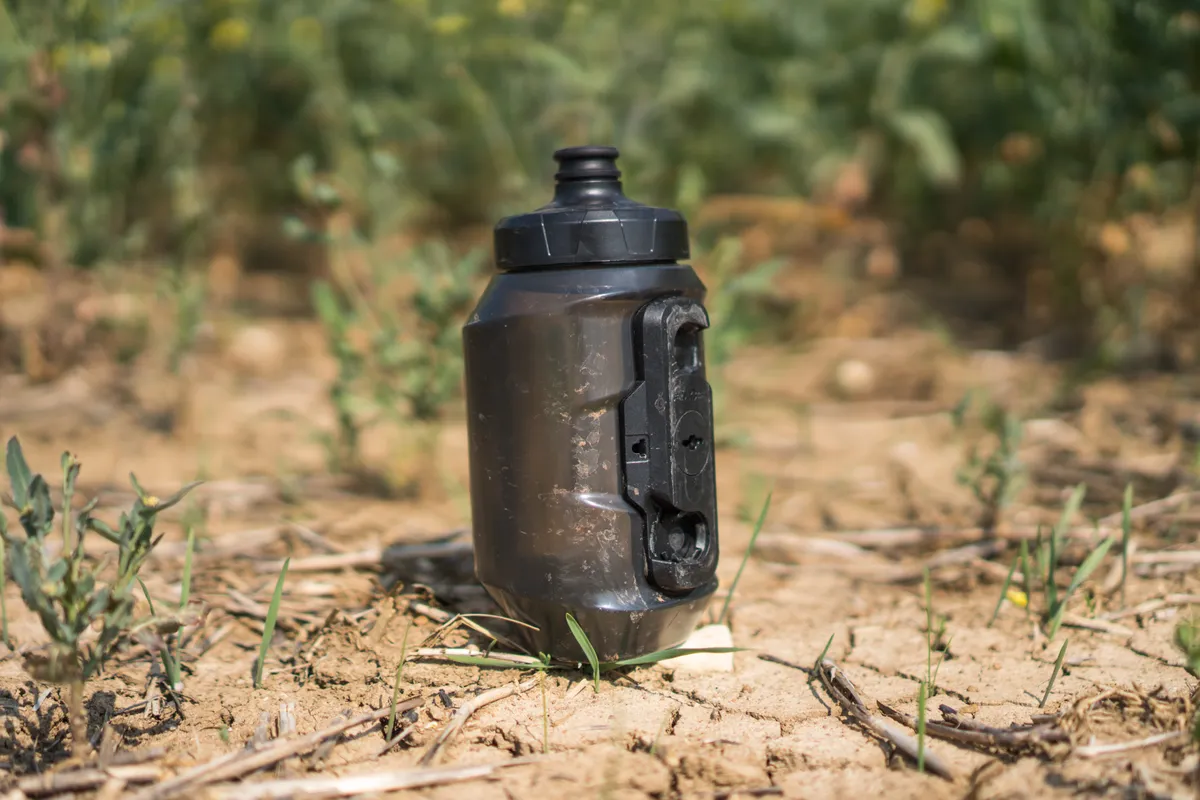
The Thirstmaster 4000 water bottle didn’t fly off the bike with the Fidlock system keeping it in place successfully during the test period.
There is the option to run a standard bottle cage with a the flat baseplate supplied with the bike, when the Thurstmaster 4000 option isn't selected.
Some bottles and bottle cages might not fit in the small under shock space.
Bottle removal was easy, but locating it on its mounts was trickier because space is tight near the bottom bracket.
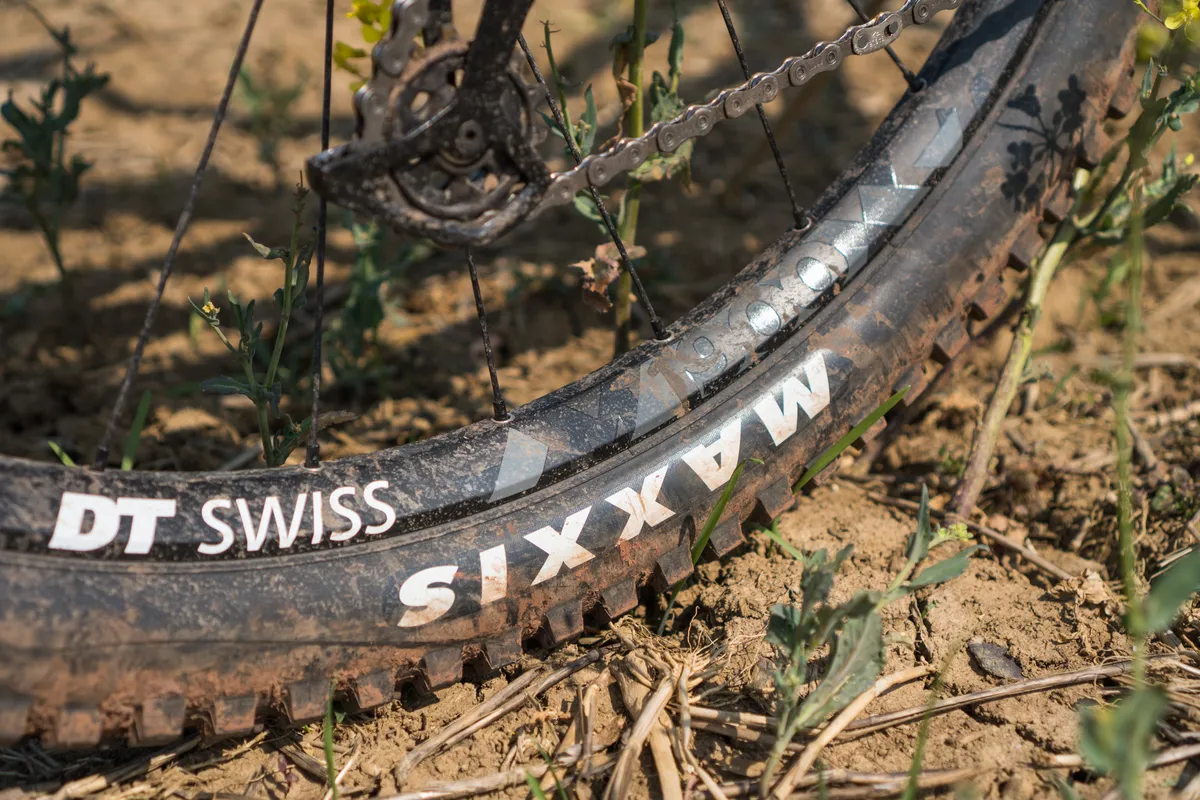
As ever, the Maxxis Minion DHF/DHRII tyre combo provided exceptional grip, although my bike was set up tubeless when it was delivered, which does help improve grip and comfort – a luxury not afforded to the consumer.
YT Jeffsy Base 29 bike bottom line
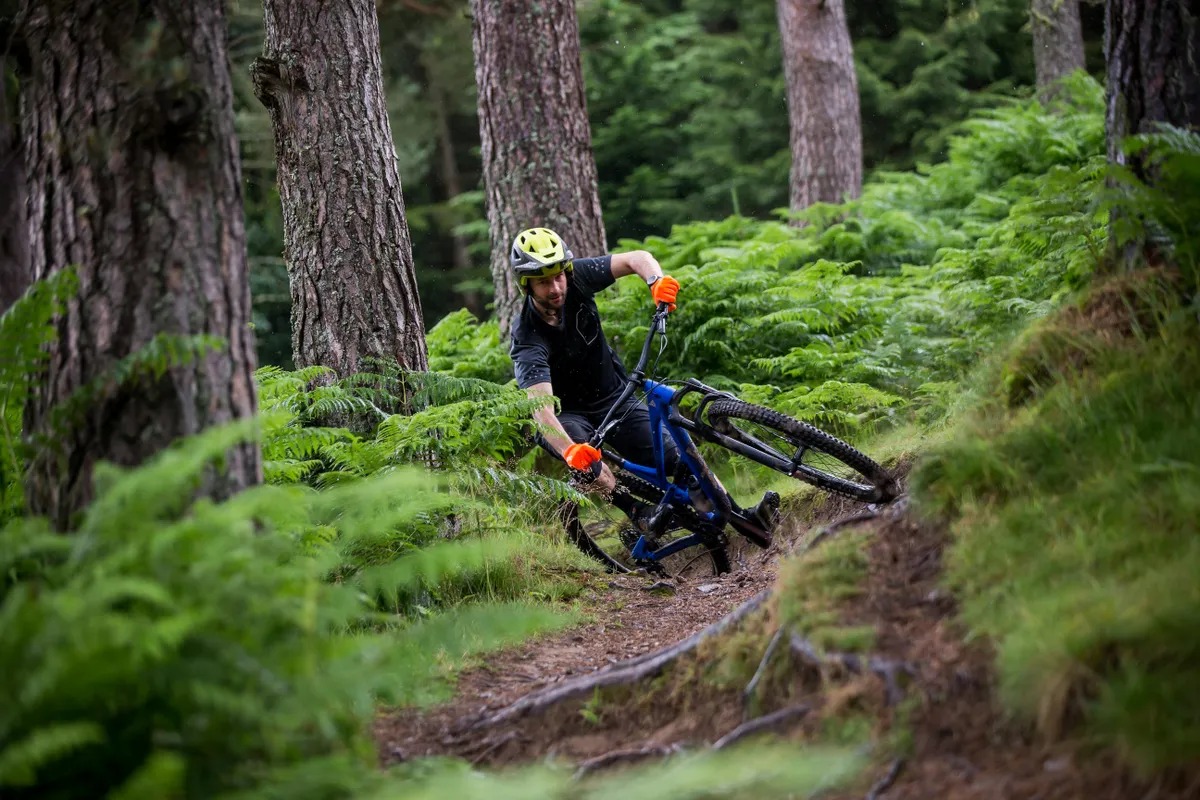
Offering exceptional value for money with only some small niggles, the Jeffsy Base 29 is a tough bike to beat considering the amount of performance on offer.
Although the Base model is fairly weighty, it doesn’t seem to affect the ride negatively unless you are going to be spending your entire time climbing. The weight actually seems to help on the descents.
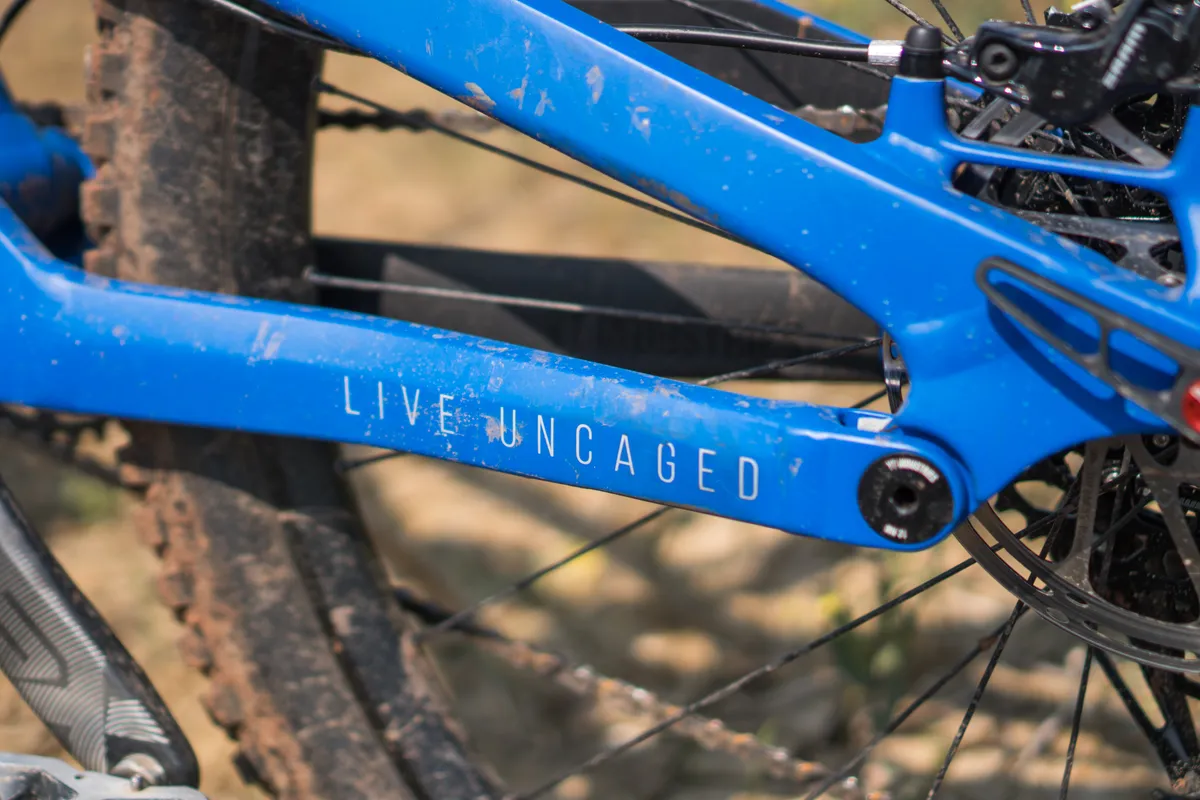
If I was going to be spending my own money on a bike, the Jeffsy Base 29 would be at the top of my shortlist because it will be capable of tackling pretty much anything you can throw at it. A true one bike quiver, then.
Product
| Brand | Yt_industries |
| Price | €2299.00, £1999.00, $2299.00 |
| br_whatWeTested | YT Jeffsy Base 29 |
| Weight | 15.49kg |
Features
| Fork | RockShox Yari RC |
| Stem | Race Face Aeffect R 35 |
| Tyres | Maxxis Minion DHF 29X2.4in dual compound EXO TR front, Maxxis Minion DHRII dual compound 29X2.4in EXO TR rear |
| Brakes | SRAM Guide T 200mm rotor front, 180mm rotor rear |
| Cranks | SRAM SX Eagle |
| Saddle | SDR RDR MNT |
| Wheels | DT Swiss M1900 Spline |
| Headset | Acros |
| Shifter | SRAM SX Eagle 12-speed |
| Cassette | SRAM PG1210 Eagle |
| Seatpost | YT Postman |
| Grips/tape | ODI Elite Motion V 2.1 |
| Handlebar | Race Face Aeffect R |
| Rear shock | RockShox Deluxe Select |
| Bottom bracket | SRAM DUB |
| Available sizes | Small, medium, large, extra large, extra extra large |
| Rear derailleur | SRAM SX Eagle 12-speed |
